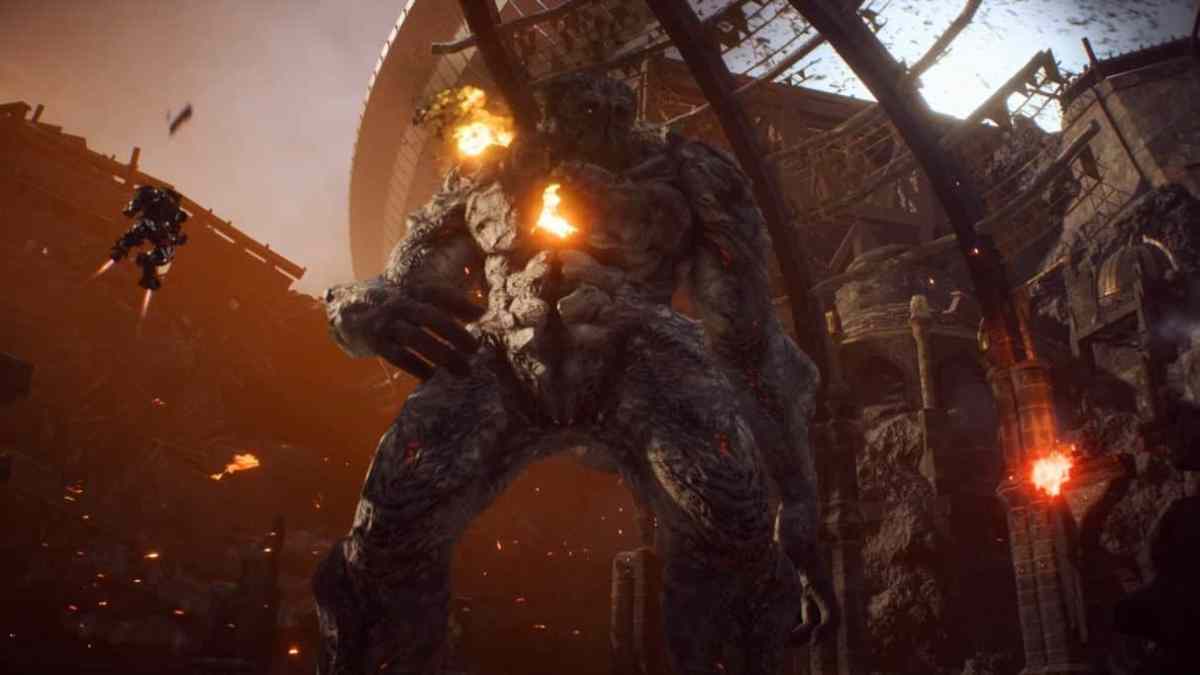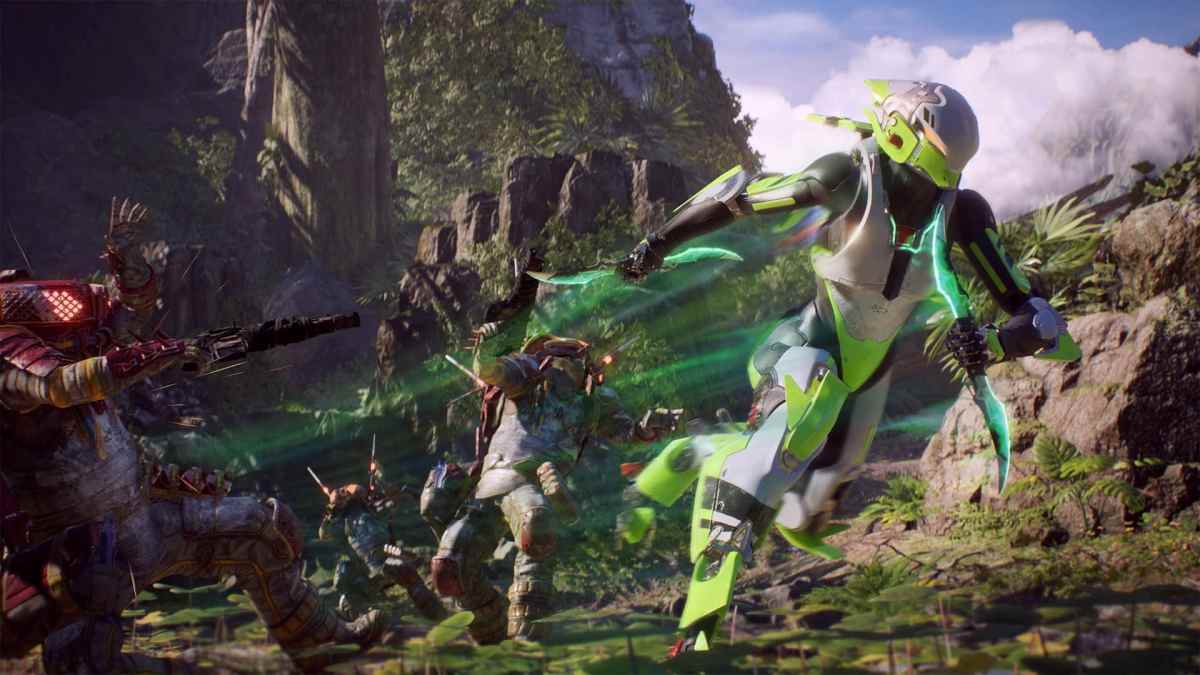Much has been said about Anthem’s troubled development cycle, and now BioWare and EA will reportedly announce the fate of the game’s future soon. It’s a game that struggled for years to find its identity, but the final result is a surprisingly hopeful, lively one. Despite the dire straits of its opening prologue, in which your nameless Freelancer falls short, Anthem isn’t a despairing world like The Division nor a constant space opera like Destiny. Instead, it captures the aesthetic and feel of a humble space western, with players gathering up a posse of Freelancers to hunt down some no-good varmints out along the frontier.
From the moment you step into Anthem’s lush, vibrant worlds, you can clearly tell that there are greater powers at play. The titular Anthem of Creation is a colony world engine gone awry, terraforming the world at will in wild ways. While many live free, the imperialistic Dominion are the perfect mustache-twirling baddies, present alongside more feral opponents to give you ample reason to go guns blazing out on the trail. Whether navigating beautiful underground caverns or jumping high above titanic foes, Anthem ensconces you in a living, breathing world.
Complementing this perfectly is your home, Fort Tarsis, evoking Star Wars’ Mos Eisley spaceport whenever you walk through the marketplace to your Javelin. While you’re the protagonist in your own story, other people are doing their own thing, and you organically intersect with them as neighbors. There are radio dramas you can actually listen to, then hear characters argue over which is best. Gossip about mysterious events out beyond Tarsis. Entire sidequests are dialogue-based, such as helping a struggling baker. Maybe you’ll try to convince an old woman to abandon her bigotries or help a mourning mother who mistakes you for her child.

This isn’t a world constantly on the verge of collapse — even the Heart of Rage is more like an annual hurricane season than a doomsday apocalypse. With 2020 in hindsight, that’s an especially refreshing change of pace. It’s all so breezy and light, just like your Javelin in flight. From the aetherial, peppy score to the smooth aiming, Anthem feels like a journey, not a struggle. Fights are frantic, tense affairs with you gracefully dancing around, hovering mid-air, dodging to cover, and unleashing devastating special attacks to even the odds. Some foes can absolutely tower over you, feeling like an Iron Man-infused Shadow the Colossus duel of wits.
Thoughtful platforming is a must, especially since, depending on the biome you’re in, your versatility can expand or contract on the fly. Fighting in a damper or chillier area, you might be able to float infinitely. Start a fight in an arid region and your suit might start overheating, demanding controlled movements and deliberate planning. Your abilities further demand this, some requiring you to close the gap or get a clear shot. The spryest Javelin even has a melee-centric ultimate attack, rewarding deftly navigating the battlefield. It’s all such a rush.
Anthem primarily receives criticism for its repetition, but the sheer amount of ways to engage enemies dwarfs the far more bog-standard options afforded in Destiny. You can swap classes at any time, each with wildly different abilities. Your choices aren’t as simple as “do I use the shotgun or the rocket launcher,” but whether you want to poison, freeze, or stun opponents. Do you want to blast them with magic? Be a walking artillery cannon? Fire a psionic copy of yourself headlong into them? Not to mention how loot offers alternate abilities rather than simply bigger numbers on the same few guns. There’s far greater value in receiving the perfect piece of equipment to flesh out your kit than just getting something new and shiny that does the same darn thing.

There are absolutely esoteric elements like guild loyalty that could use a tad more explanation, but I could say the same for most looter-shooter games. The issues plaguing Anthem aren’t unique to it, and quite frankly many of them could be solved by just adding more content to Anthem. It’s easy to get specced out to dive into the game’s current raids by just playing the main story and a few side questlines. In the middle of the fray, it’s some of BioWare’s best combat design. It doesn’t hurt that it’s a gorgeous world to explore, vibrant and full of life rather than dull grays and browns like so many other action games still rely on.
The vocal cast even bring their A-game, from the protagonist’s voices, to quest-givers like the adorkable Brin, to an obsessive janitor who is constantly trying to get silly new regulations passed. Yes, the main plot thus far has been largely typical BioWare, but with a world so endearing, that doesn’t have to be a make-or-break aspect. So many smaller stories are told with aplomb that it’s okay for the big set piece story to deliver strictly spectacle.
Anthem is and isn’t what people traditionally expect from BioWare. It has all the right elements to be a great live-service game. With BioWare Austin, which transformed Star Wars: The Old Republic into one of the longest-form BioWare RPGs of all time, at the helm of “Anthem Next,” it more than deserves a chance to expand on all that’s great in Anthem. There’s a gem of a game here; it just needs the time and resources to become fully realized. If Star Wars Battlefront II could turn itself around, there’s no reason Anthem can’t leap into next-gen swinging.
